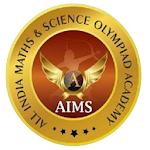Click The Below Image
To Attempt The Online Test
👇👇👇👇👇
Shedding Light on Reflection and Refraction! 🌟🔍💡
Hello, future physicists! 🌟 Have you ever wondered why you can see your face in a mirror or why a straw looks bent in a glass of water? It’s all because of reflection and refraction of light! Light behaves in amazing ways, and understanding its secrets can help us unlock wonders of the world around us. Let’s dive into this fascinating topic! 🚀✨
💡 What Is Light?
Light is a form of energy that travels in straight lines and allows us to see objects. It behaves like both:
- A wave 🌊
- A particle ⚛️ (according to Einstein’s theory)
It’s fast—light travels at a speed of 300,000 km/s! 🚀
🌟 Reflection of Light: The Mirror Effect
Reflection is the bouncing back of light when it hits a smooth surface like a mirror.
🛠️ Types of Reflection:
- Regular Reflection:
- Occurs on smooth surfaces like mirrors 🪞.
- Forms a clear image.
- Irregular Reflection:
- Occurs on rough surfaces like walls 🧱.
- Forms a blurred image.
⚖️ Laws of Reflection:
- The angle of incidence = The angle of reflection.
- The incident ray, the reflected ray, and the normal lie on the same plane.
Use a mirror at home to test these laws and see the magic of physics! 🔍✨
🌊 Refraction of Light: The Bending Trick
Refraction is the bending of light as it passes from one medium to another (like air to water). This happens because light changes its speed when it moves between different mediums.
🛠️ Real-Life Examples of Refraction:
- A pencil appearing bent in a glass of water. 🖊️💧
- Stars twinkling in the night sky. ✨
- Lenses in spectacles helping you see clearly. 👓
⚖️ Laws of Refraction (Snell’s Law):
- The ratio of the sine of the angle of incidence to the sine of the angle of refraction is constant.
(n₁ sin i = n₂ sin r) - The incident ray, the refracted ray, and the normal lie in the same plane.
🔍 Understanding Lenses and Mirrors
Spherical Mirrors 🪞
- Concave Mirror: Converges light (used in torches, car headlights).
- Convex Mirror: Diverges light (used as rear-view mirrors in vehicles).
Lenses 👓
- Convex Lens: Converges light (used in magnifying glasses).
- Concave Lens: Diverges light (used in peepholes).
🖼️ Real-Life Applications of Reflection and Refraction
- Periscopes and Kaleidoscopes: Use mirrors to reflect light.
- Cameras: Use lenses to refract light and form clear images.
- Fiber Optics: Light travels through refraction to transmit data.
- Rainbows: Created by the refraction and dispersion of sunlight in raindrops. 🌈
🌟 Fun Facts About Light:
- Light can travel 7.5 times around the Earth in one second! 🌍✨
- The human eye can see only a small part of the light spectrum—called visible light. 👁️
- Mirrors reflect 90-95% of light, while the rest gets absorbed.
🧪 Experiment: Explore Light at Home
- Mirror Play: Use a torch and a mirror to see how light reflects.
- Bend It Like Light: Place a straw in a glass of water and observe how it appears bent.
- Lens Magic: Use a magnifying glass to focus sunlight on a piece of paper.
🌍 Why Understanding Light Matters
Light is everywhere—in gadgets, telescopes, and nature. Understanding how it behaves helps us:
- Build better cameras and glasses. 📸👓
- Design efficient lighting systems. 💡
- Explore the universe with telescopes. 🔭✨
🌟 Hashtags
#LightReflectionRefraction 💡 #CBSEPhysics 📚 #10thGradeScience 🌟 #PhysicsIsFun 🔬 #ExploreLight 🔍 #ScienceForEveryone ✨ #LawsOfReflection ⚖️ #RefractionInAction 🌊 #ScienceIsAmazing 🌍 #LightMagic 🌟
Light isn’t just a source of brightness; it’s a gateway to understanding the universe! Keep exploring and experimenting to uncover the magic of reflection and refraction. 🌟💡
Happy learning, future physicists! 😊


